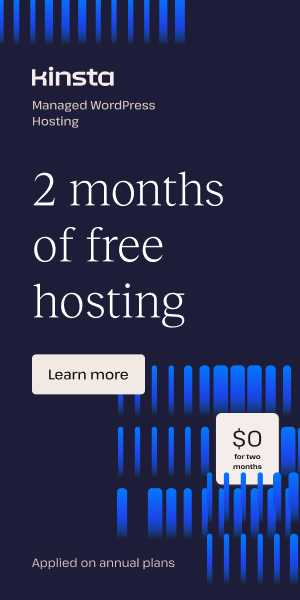Image Optimization for Figma Converted Sites
Optimizing Images to Boost Site Speed and Performance
Image optimization is a crucial factor when converting designs from Figma to WordPress, especially for maintaining fast site speed and seamless user experience. Since images often make up the largest portion of a webpage’s load time, efficient compression and export strategies are essential. Figma2WP Service specializes in transforming your Figma designs into highly optimized WordPress sites, ensuring that your images are handled with precision to enhance loading times while preserving visual quality.
Understanding Image Compression and Its Impact on Performance
Image compression reduces file size by minimizing redundant data, which directly impacts site speed. Large, uncompressed images can drastically slow down a website, harming search engine rankings and increasing bounce rates. Using appropriate compression techniques tailored for web use, such as JPEG for photos and PNG or WebP for graphics, strikes the right balance between quality and speed.
Google recommends using next-gen formats like WebP to reduce image sizes by up to 30% without compromising quality. This format is widely supported and is increasingly becoming a standard for modern websites.
Figma Images Export: Best Practices for Web Implementation
Exporting images from Figma smartly is the first step toward effective image optimization. Figma provides flexible export options, including PNG, JPG, SVG, and PDF, with advanced settings such as image resampling to adjust quality.
According to Figma’s export guidelines, you can choose between two image resampling methods:
- Detailed (bicubic sampling): Best for images needing finer details and smoother gradients, like photography or complex artwork.
- Basic (nearest neighbor sampling): Suited for icons, logos, or pixel art with hard lines where crisp edges matter over gradients.
Selecting the right resampling option preserves image sharpness and reduces unnecessary pixel data, crucial for site speed optimization.
Before exporting, it’s important to:
- Remove unnecessary styles (like shadows or overlays) that can be re-applied through CSS or WP plugins.
- Use appropriate scale factors — for example, export images at 1.5x or 2x sizes for retina displays without oversizing the base file.
- Ensure image names reflect their purpose and location on the site to maintain organization during development.
Experts like CL Creative emphasize that duplicating images within Figma before export helps retain design control and ensures flexibility during implementation.
Image Compression in WordPress: Tools and Techniques
Once Figma images are exported, compressing them further within WordPress is vital for maintaining optimum site speed. WordPress users benefit greatly from plugins designed for image compression, such as:
- EWWW Image Optimizer – Automatically compresses images on upload and provides bulk optimization features.
- Smush – Offers lazy loading, compression, and resizing tools to optimize images on the go.
- Imagify – Supports WebP conversion and aggressive compression settings for various needs.
These tools typically provide options for lossless (no quality loss) or lossy (some quality reduction) compression, allowing site owners to customize according to their aesthetic requirements and speed goals.
Real-World Example: From Figma Design to High-Performance WordPress Site
Consider a design agency that crafts a high-fidelity Figma prototype featuring intricate images for a client’s e-commerce site. By leveraging Figma2WP’s expert conversion services, they ensure:
- Export of images using Figma’s “Detailed” resampling for product photos and “Basic” for icons, optimizing quality based on content.
- Conversion of large PNGs to WebP format to reduce file sizes by up to 30%, significantly reducing page load times.
- Integration of WordPress plugins like Smush for automated compression and lazy loading, further enhancing user experience, especially on mobile devices.
- Organization of images with semantic, SEO-friendly naming conventions to aid developers and SEO tools.
The result is a WordPress website that retains the aesthetics of the original Figma design while loading swiftly across all devices, providing a seamless customer journey that boosts conversions.
Advanced Export Settings to Improve Image Quality from Figma
The Figma community has proposed enhancements for an Advanced Export Manager that would allow detailed control over image quality, size, and color profiles, such as:
- Setting pixels per inch (PPI) precisely for print and web outputs.
- Choosing image dimensions and monitoring file size previews before export.
- Selecting between RGB and CMYK profiles to manage color accuracy on different media.
- Real-time zoom preview to evaluate the visible impact of compression choices.
Although these features are in developmental discussion, current Figma export capabilities already offer multiple settings to optimize your workflow and image output.
Tips to Maintain Site Speed While Using High-Quality Images
Optimizing images isn’t just about compression. To maintain site speed and excellent performance, incorporate these strategies:
- Lazy loading: Load images as users scroll down the page, rather than all at once.
- Responsive images: Use HTML
srcsetattributes to serve appropriate image sizes based on the visitor’s device. - Content Delivery Networks (CDNs): Distribute image files globally for faster retrieval. Popular options include Cloudflare CDN and KeyCDN.
- Minimize image dimensions: Avoid uploading images larger than the display size unless needed for retina screens.
Additional Resources for Image Optimization
To dive deeper into the technical side of image optimization for websites, check out these authoritative sources:
- Google Web.dev – Making the Web Fast: Offers guides on optimizing images and overall site speed.
- Google Developers – Image Optimization: Best practices and tools for image compression and formats.
- CSS-Tricks – Responsive Images for Web Performance: In-depth tutorial on responsive image techniques.
- WP Speed Up Academy: WordPress-specific advice for image optimization plugins and techniques.
How Figma2WP Ensures Seamless Image Integration
Figma2WP Service takes the guesswork out of image handling by automating best practices within the conversion process. Their team:
- Analyzes the exported Figma images to adjust compression without sacrificing clarity.
- Incorporates modern web formats like WebP where supported, with fallback options for older browsers.
- Implements lazy loading and responsive image attributes to serve optimal image sizes to users across devices.
- Offers customization for individual client needs—whether the priority is maximum quality, minimal load times, or a balance of both.
Reliable image optimization within Figma2WP’s conversion helps you achieve faster-loading WordPress websites that reflect your design vision faithfully.
Final Considerations
Image optimization for Figma converted sites is not simply about exporting images with minimum size—it requires a strategic balance of export settings, compression techniques, and smart implementation on WordPress. By combining Figma’s export capabilities with professional WordPress image compression plugins and configuration, you can dramatically improve site speed and user engagement.
If you are ready to transform your Figma designs into blazing fast, visually stellar WordPress websites, get in touch with Figma2WP. Their expertise ensures every pixel counts for your audience and your search rankings.
More From Our Blog
Crafting Engaging Media Portals with Effective Article Design Creating a compelling media portal today demands exceptional attention to both aesthetics and functionality. The design of article pages, user navigation, and responsiveness play a decisive role in reader engagement and retention. Especially when it comes to transforming designs from platforms like Figma into fully functional WordPress Read more…
Elevating Your Online Presence Through Engaging Social Design and Community WP Building a vibrant community WP (WordPress) site is increasingly crucial in the digital age for brands aiming to foster trust, loyalty, and dynamic interaction among their customers. By integrating Figma2WP Service solutions, businesses can transform precise figma social design prototypes into powerful WordPress-based discussion Read more…


